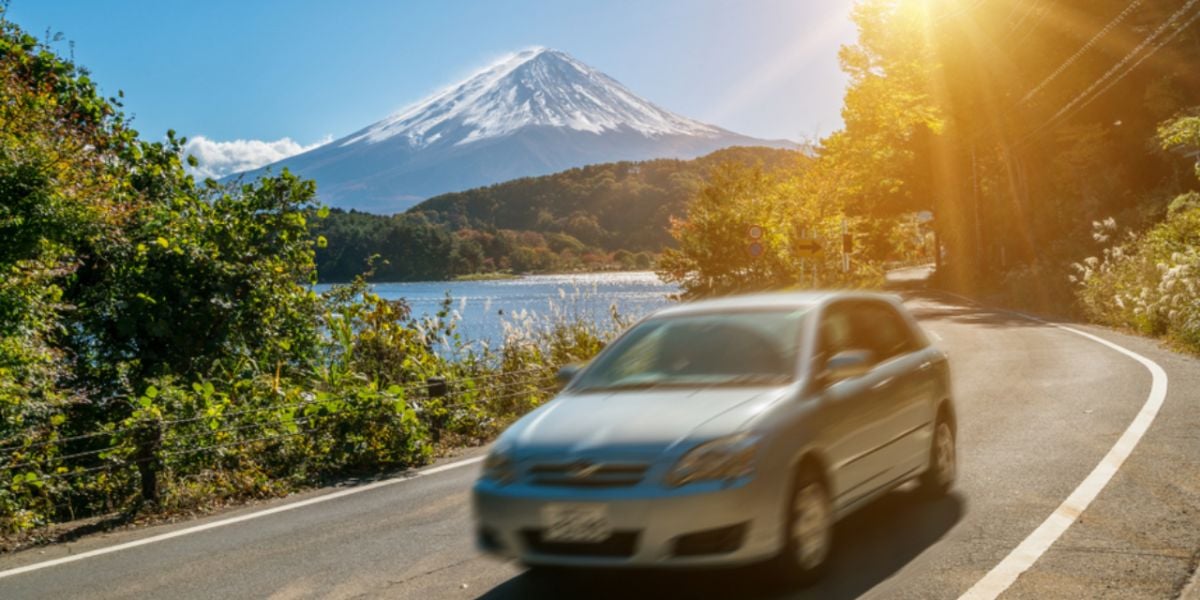
If you live in Tokyo, Osaka, or Nagoya, owning a car might be unnecessary because of the excellent public transportation systems of these large metropolitan areas. However, if you live in countryside areas where public transportation is less convenient or infrequent, having a car becomes essential for getting around. Suppose you want to rent a car for road trips in Japan, or your job involves controlling motor vehicles, and you need to learn more about the traffic regulations in Japan. Look no further! Here's a practical guide to driving in Japan safely.
Requirements to drive in Japan
Japan has strict rules in its driving culture, including age and license requirements. According to the Road Traffic Law of Japan, a person must be at least 18 years old and obtain a valid license to operate a motor vehicle in Japan.
Foreigners can also drive in Japan as long as they meet the above requirements. If you have an International Driving Permit (IDP) issued under the 1949 Geneva Convention on Road Traffic, you can drive a car in Japan following Japanese laws. However, IDPs issued under other treaties, like the Vienna Convention, cannot be used in Japan, even if they are issued by countries that are part of the Geneva Convention (read on for more related information).
Cars in Japan
Driving on the left
In the Land of the Rising Sun, the steering wheel is on the right side, so you'll be driving on the left side. In any case, driving in Japan will take some time to adapt. Unless you are from a country using left-hand traffic, such as Britain, Sweden, Ireland, Thailand, etc., you will have the impression that everything is reversed, and you might use the windshield wipers instead of the turn signal.
There's no need to panic, however; it will come with practice. However, avoid finding yourself on a five- or six-lane highway on your first day of driving. Take a good look at your surroundings. Start by driving on minor roads.
Car sizes in Japan
Be aware of the size of your vehicle. It will fit on the main roads, but you may need more support when driving through the narrow streets of the local neighborhoods. You will understand better the utility of the famous boxy cars, the Japanese cars, or the Kei cars. It is compact and automatic and can easily fit into small streets.
The other particularity of Japan is the slopes. Some roads are very steep. For more comfort, opt for an automatic car. Most Japanese motor vehicles are automatic, whether they are square or not.
Japanese roads
In general, the road conditions in Japan are good, but the side streets in cities can be narrow or inaccessible for larger vehicles. Traffic congestion is a common issue in and around urban areas. Most of the roads in Japan are toll-free. You will need to pay fees when using expressways, certain scenic routes, and a few toll tunnels.
The costs for expressways vary depending on different factors, including distance and types of vehicles. For example, the approximate cost from Kagoshima to Fukuoka is 6,500 yen (300 km), and from Osaka to Kyoto is 2,500 yen (50 km).
Source:
There are very few roundabouts in Tokyo. They are slightly more common in smaller cities. In big cities, there are more major roads and intersections. Don't be surprised if you find yourself lined up with eight other cars before an intersection. It is impressive, especially if you are not used to driving on such wide lanes. Even pedestrians fear they won't make it to the next light before the cars start. Don't worry. You'll soon get through these giant intersections.
Japanese traffic regulations
Traffic signs
In Japan, international traffic rules are applicable. The road signs are generally similar to the ones you may know. The words are written in kanji and letters. You will sometimes see a red TOMARE (止まれ) sign without any translation. TOMARE may also be written large on the road (often on small streets). This is the STOP sign. "Tomare" means "stop". Don't worry: even without a translation, the TOMARE sign is always behind a large white line, the international STOP sign. Find out more by clicking on the useful links at the end of the article (road signs in Japan).
Speed limits in Japan
Maximum speed limits in Japan
The legal maximum speed, also known as the legal speed limit, is determined by the Road Traffic Law.
On regular roads, cars can travel up to 60 km/h, emergency vehicles can go up to 80 km/h. On highways or expressways, cars can reach 100 km/h but not below 50 km/h, while large cargo and trailers have a maximum speed limit of 80 km/h. These speed limits apply to the main road and the adjacent acceleration or deceleration lanes. If there is no speed limit sign, the maximum speed is determined by the respective legal speed limit. A few highways allow a maximum speed limit of more than 100km/h such as some sections of Joban Expressway (110 km/h) or Shin-Tomei Expressway (120 km/h).
Recently, the cabinet has approved a revised Road Traffic Law enforcement order that eases the maximum speed on expressways from 80 km/h to 90 km/h for medium- and heavy-duty trucks with a gross weight of 8 tons or more, which will take effect in April 2024 (source: Nikkei - Japanese).
Don't try to step on the pedal for your and other people's safety. The police do not joke with the traffic rules. If you want to wake up your pilot's spirit, better go and test your aptitudes on the racing simulators in a game center.
Punishment for speeding
There are two types of penalties if you violate the speed limits: administrative penalties and criminal penalties. Both of them are fines.
The amount of fines varies depending on the violation and is specified in Article 45 of the Road Traffic Law Enforcement Order, as outlined in Appendix 6 of the same order. Speeding is referred to as "excess speeding" under the Road Traffic Act. For regular roads, fines for ordinary cars range from 9,000 yen to 18,000 yen; on expressways, fines range from 9,000 yen to 35,000 yen, depending on the degree of excessive speed.
In addition, exceeding the speed limit by 30 km/h or more on general roads and 40 km/h or more on expressways leads to criminal penalties. In such cases, you may face imprisonment for up to 6 months or a fine of up to 100,000 yen, according to Article 118 of the Road Traffic Act.
Additionally, driver's licenses operate on a "points system", which adds points based on violations. Depending on the accumulated points, license suspension or revocation may be imposed (source: Punishment for speeding).
International driving license in Japan
As mentioned above, if you have international driving permits based on the 1949 Geneva Convention, you can drive in Japan for up to one year. IDPs issued under other treaties, such as the Vienna Convention, cannot be used in Japan.
Belgium, France, Germany, Monaco, Switzerland, and Taiwan have separate agreements with Japan. So, if you have licenses issued in these countries, you also can drive in Japan for up to one year. In that case, you must obtain an official Japanese translation of your driver's license. You can get this translation from your countries' consulates and embassies in Japan.
How to obtain a translation of an IDP in Japan
You can have your license translated at the Japan Automobile Federation (JAF) or your Embassy in Japan.
To apply for a translation, you will need to submit a dedicated form (available on the JAF website) and a color scan of both sides of your license. If you are a resident, you will need to produce a color copy of your resident card.
Japanese driver's license
Those who stay in Japan for more than one year or have an IDP not recognized by Japan must obtain a Japanese driver's license. During your first year in Japan, you will be authorized to drive with your original license along with its certified translation. But from the second year, you will need to have a Japanese driver's license.
Converting your original license to a Japanese license
Japan has agreements with over 20 countries and some US states to simplify the process of getting a Japanese driving license. So, you can obtain a Japanese license without taking exams if you have a valid driving license from those countries and states.
The driver's license conversion is called "gaimen kirikae". Visit your local license center with an official license translation, your passport, and proof of holding the license for at least three months in the issuing country. Undergo a basic eye and physical test at the center, and you will receive your new license on the same day.
However, you will need to take written and practical exams if your license is from a country or state without an agreement with Japan, like China, Brazil, or certain US states. Obtaining a Japanese license through this process may require multiple attempts, even for experienced drivers.
You are now ready to drive on Japanese roads. Fasten your seatbelt and enjoy your trips!
Useful links:
Driving Japan – have your license translated into Japanese
Government of Canada: Driving in Japan
We do our best to provide accurate and up to date information. However, if you have noticed any inaccuracies in this article, please let us know in the comments section below.








